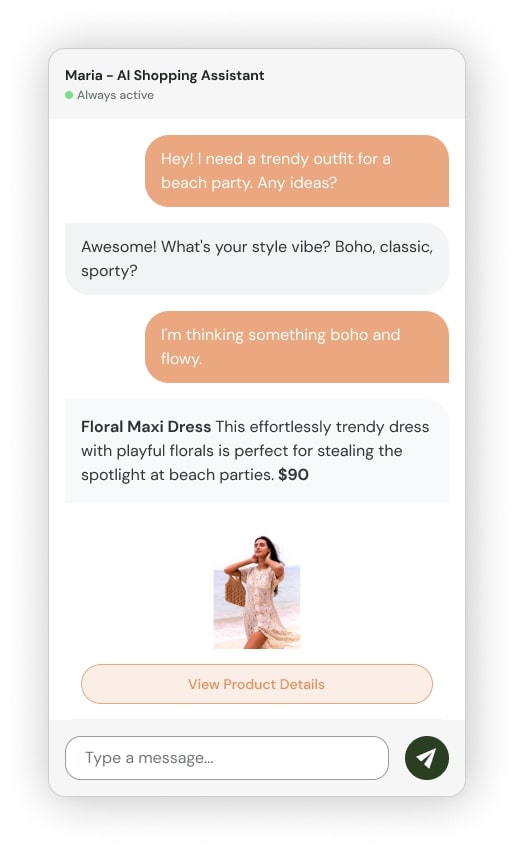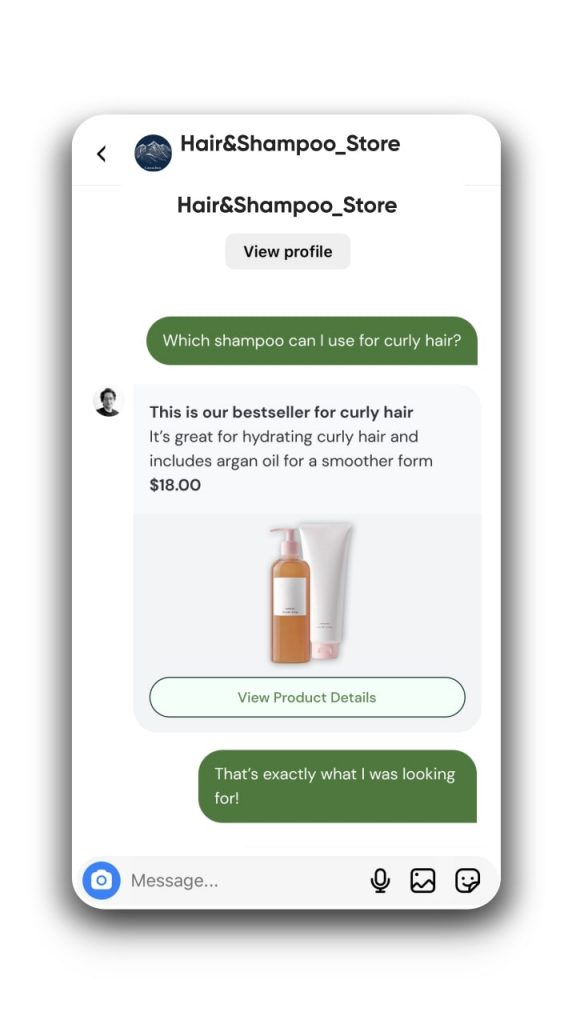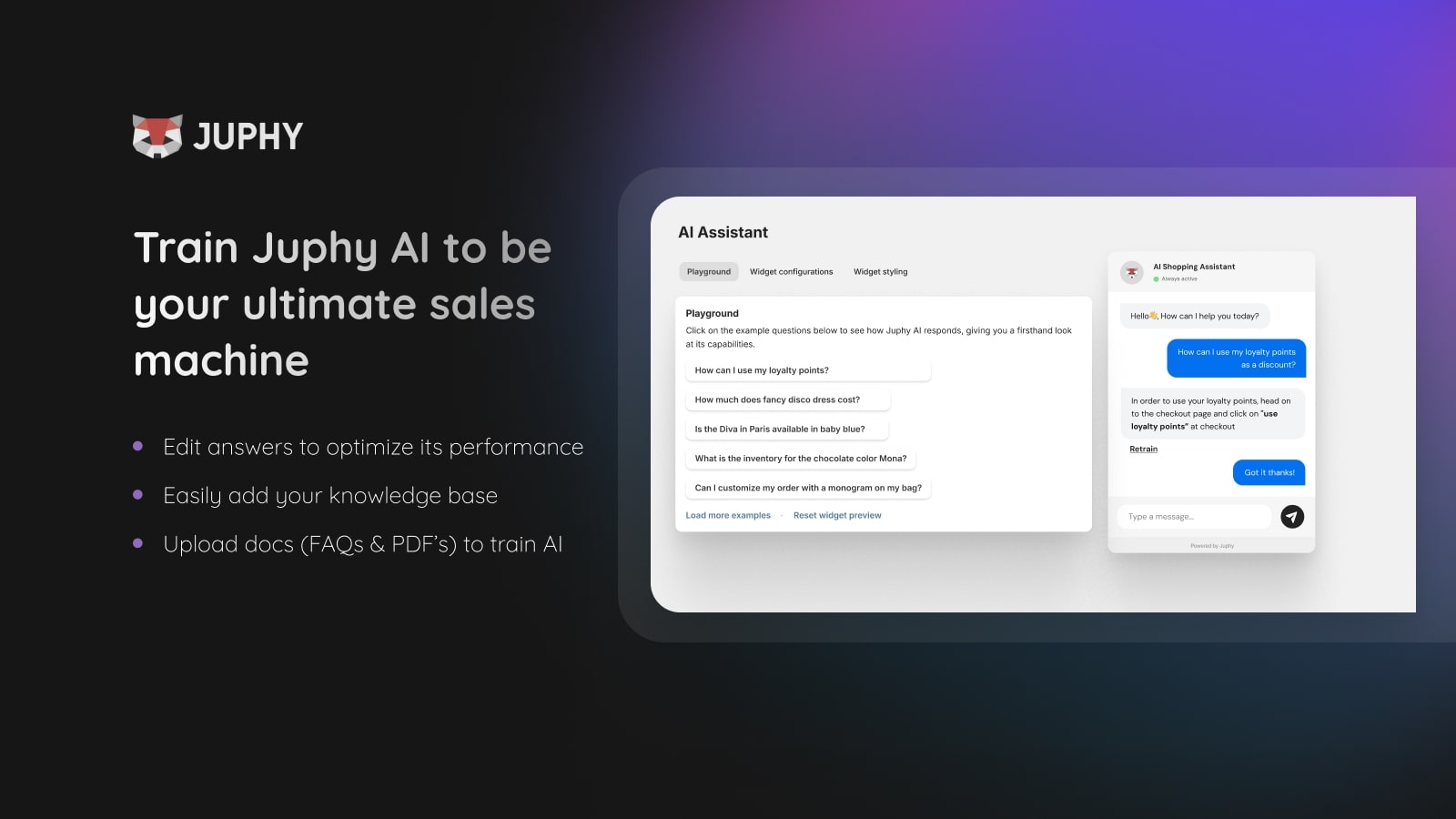How to Use Chatbots for Sales
Inci Vardar
I believe almost every extroverted salesperson would like to speak to their customers individually, learn about their cravings and issues, persuade them to buy, and assist them throughout their shopping journeys. But it can be quite impossible because more than 33% of people worldwide shopped online in 2022. That is about 2.64 billion people who show online activity day and night, and interacting with so many people inevitably makes many tasks and dialogues repetitive. We humans don’t like reliving the same moment again and again, so we delegate those tasks to robots instead. And chatbots are among the popular robots we utilize to help us to manage automation, customer service, and a large portion of sales processes effectively.

Understanding Chatbots
Chatbots are a part of conversational commerce, and because of the consumer demands for round-the-clock services, they are increasing in popularity among businesses and consumers alike. A 2020 report by Juniper Research suggests that consumer retail spending over chatbots will reach $142 billion by 2024. This is why it’s important to understand chatbots’ capabilities for supporting or handling sales.
What are Chatbots?
Chatbots are computer programs that are usually powered by artificial intelligence and designed to interact with users through text-based conversations. Humans develop them to avoid repetitive tasks like greeting customers with a warm “Hello! How may I help you?”, or providing information, such as the available sizes of a dress. While the basic chatbots can perform these simple tasks, the new generation of AI-powered chatbots uses machine learning and natural language processing techniques to understand and generate human-like responses. These bots can create smoother conversations and can manage the whole sales and customer support processes in a streamlined manner.

Chatbots can be integrated into websites, messaging platforms, mobile apps, and other digital interfaces. Many chatbots are deployed on chatbot platforms, for instance, Facebook Messenger, WhatsApp, WeChat, Slack, or text messages. While having simple conversations and delivering previously programmed answers to customers, chatbots can also help you gain valuable insights into customer needs and preferences.

Uncover the diverse types of chatbots and how they are used in e-commerce. Get started in this guide and watch your customer support improve!
The Importance of Chatbots in Sales
Utilizing chatbots is a great way for businesses to scale and enhance customer engagement. They boost efficiency by offering 24/7 question-answering capabilities, thereby also opening businesses to foreign markets.
According to Outgrow, if the alternative were to wait 15 minutes for an answer, 62% of consumers would rather talk to a chatbot than a human agent. The site also mentions that 80% of consumers said they are more willing to use a chatbot if they know they can quickly and easily transfer to a live agent. Personalization and human touch still maintain their importance. Still, modern chatbots can achieve it to a certain extent, for a fraction of the cost of increasing the employee count to work in shifts.
Let’s dive deeper. How can your business harness the power of chatbots for tangible benefits?
How Chatbots Can Improve Your Sales Process
Today, marketing is the second most popular purpose for chatbot use, coming after customer support. That’s because chatbots can handle thousands of customers in minutes. They direct users to desired products, provide feature information, and suggest related items.
Below are some tips to improve your sales process with chatbots:
Automating Routine Interactions
“Welcome to our online store. How can I help you today?” is one of the most basic interactions with customers, and it can be easily managed either with a chatbot or canned responses if you want to keep the customer conversations strictly within business hours, accompanied by a human agent. As well as greeting customers, chatbots can answer frequently asked questions or provide basic information about product features, pricing, availability, shipping, and return policies. Tasks such as appointment scheduling, order tracking, customer onboarding, and informing customers about discounts and promotions can also be automated with a chatbot.

24/7 Customer Support Availability
Unlike people, chatbots don’t need sleep. They never go hungry or have a bad day either. Chatbots can serve customers at lunchtime, throughout their second screen hours, or during a midnight shopping frenzy. This can lead to increased sales performance, as well as opening the door for global markets if supported by multiple language options and worldwide shipping.
Enhanced Customer Experience with Personalized Interactions
While human interactions remain appealing, chatbots offer certain advantages. With their impeccable memory, they can seamlessly access visitors’ historical data and past purchases, offering timely personalized recommendations. They access product and customer data fast, so their guidance aligns perfectly with timing and context. This kind of personalization creates a smooth and memorable purchasing experience, which can lead to customer loyalty.

Lead Qualification and Nurturing
Chatbots have become more intuitive thanks to the advancements in language processing. Today, they not only identify leads but also ask qualifying questions, which make them understand the context of conversations and foster effective dialogues. After determining the needs and preferences of the prospects, chatbots can categorize them based on their tendency towards purchasing certain products or services and route them to the appropriate sales representative.
But as mentioned before, chatbots can streamline the whole process, and instead of directing the leads to a human agent, they can engage with customers over time and keep the interest alive. Sending relevant content such as product updates or special offers, conversational AI can nurture the leads until they are ready to make a purchase.

Faster Response Times to Boost Conversion Rates
The marketplace is more competitive than ever, and brands can’t really afford to leave their customers hanging for days or even hours if they plan to survive and thrive in this environment. Another advantage of chatbots over humans is that they are pretty good at multitasking. While you can greet quite a few customers with a canned response to improve your first response time, a chatbot can simultaneously greet and sustain conversations with hundreds of people. According to a 2022 study, 89% of consumers appreciate customer service chatbots for their quick responses. We know that customer service is the new marketing, and delivering fast and efficient service has a very high potential to boost conversion rates.
How to Integrate Chatbots in Your Sales Funnel
An e-commerce sales funnel comprises six steps, and each step has room for improvement that can be achieved by integrating chatbots.
The first stage, awareness, is when the prospects become aware of your brand and your product’s potential role in meeting a specific need. It might happen through your ads on social media platforms, where prospects can initiate conversations with your brand. This is one of the platforms that enable you to enter the domain of conversational commerce and the point where you can introduce chatbots as a part of your e-commerce strategy.
Identifying the Right Places to Deploy Chatbots
Interest is the second stage of a sales funnel; the interactions in this stage can be nourished through dialogue. A chatbot combined with a tool that enables you to manage all your social conversations in real-time can quickly turn the first contact into a series of interactions that drive the consumer to the consideration stage. It is said that on Facebook Messenger alone, there are over 300,000 chatbots in operation, which makes social platforms ideal places for deploying chatbots.
A potential customer who is in the interest or consideration stages can also visit your website instead of initiating a conversation on social media. Your website’s landing page is a key touchpoint where a chatbot can greet visitors, answer basic inquiries, and guide them toward relevant product or service information. Product pages are another of the critical areas where chatbots can provide real-time assistance, addressing any doubts or concerns that might arise during the decision-making process.

As sad as it is for the retailer, many people have second thoughts during the checkout process. By deploying chatbots to this area, you can prevent cart abandonment by addressing payment or shipping queries.
A successful checkout doesn’t mean that the shopping experience is over. You can collect customer information and feedback by deploying a chatbot that turns boring web forms into conversations. You can also automate returns with a chatbot since all the information about a customer’s journey is already in logs to provide a personalized and easy process. The quicker a brand solves a problem, the more it helps build trust and loyalty.
Last of all, the retention phase of the sales funnel can be handled by chatbots. They can nurture your existing customers by making highly personalized offers and creating cross-sell or upsell opportunities.
Aligning Chatbots with Your Sales Strategy
Chatbots must be trained to create responses that align with your brand voice and sales objectives for consistency and effectiveness. Sales goals such as lead generation, upselling, or customer retention require you to deliver different kinds of messages and obtain different kinds of information; hence, the chatbots you build should be able to differentiate the sales funnel stages and segment the customers accordingly.
Chatbots also enable you to identify pain points in the sales process, which can help you fine-tune your strategy by implementing data-driven insights. Aligning chatbots with your sales strategy not only enhances customer engagement but also provides you with valuable insights, ultimately contributing to improved conversions and revenue growth.
3 Practical Tips for Optimizing Your Sales Chatbots
Training the chatbots for specific purposes is not a one-time thing because customer needs and preferences evolve over time. Before seeing a decline in your chatbot sales performance, you can continually optimize your chatbots for further interactions. You can experiment with targeting, calls-to-action, and reply buttons, as well as A/B testing your chatbot’s responses.

You can further improve your chatbot’s efficiency by;
- Keeping the Conversations Human-like
Having a smooth and easily understandable conversation creates a sense of familiarity and comfort, making users more inclined to engage. But you should keep in mind that chatbots are not humans, and however sophisticated they have become, they may not completely imitate a person’s responses throughout the dialogue. So you shouldn’t let your leads think that the chatbot is a real person in order not to set false expectations.
Although the name suggests conversations at any length, chatbot interactions should be short and precise. Remember that chatbots are utilized for practical reasons like speed and convenience, not for friendly conversation.
- Constantly Evaluating and Improving Your Chatbot’s Performance
According to Matthew Howells-Barby, “better bot experiences with more engaged audiences are getting 80-90% response rate, while even the least favorable experiences are in the 35-40% range.” This means that there is probably room for improvement at any time, as trends change and customer preferences vary constantly. You can try different opening lines, call-to-actions, reply buttons and test their performances with different audiences in order to optimize.
- Using Chatbots for Upselling and Cross-Selling
Customer retention is a key factor for sustainable business growth. Investing in existing customers builds further trust, fosters loyalty, and creates opportunities for better customer lifetime value. You can utilize chatbots to engage customers with personalized upsell messages when they use your product for a while and see value. With timely, contextual messaging, consumers enjoy a seamless shopping experience crafted according to their distinct needs and preferences, while businesses boost the probability of sales with added value.
Juphy’s Role In Improving Your Sales Using Chatbots
When it comes to increasing sales, Juphy can become an important and cost-efficient asset for online business, helping boost sales with instant and personalized answers and the help of its ChatGPT-powered AI Agent for Shopify. Unlike basic chatbots, Juphy AI, featuring the ‘Built for Shopify’ badge, serves as a dedicated virtual sales assistant, knowing every detail of your store inside and out.
Let’s check out some of its features:
Personalized Shopping
Enhancing customer experience, Juphy AI adds a personal touch during customer shopping journeys. Functioning like a personal shopping assistant, it memorizes customers’ styles, preferences, and purchase histories. Pulling insights from browsing history, it suggests specific products, raising the likelihood of customers finding and purchasing items they love.
Social Media Integrations
Beyond Shopify, Juphy’s AI Agent can be integrated into Instagram and Facebook too. It skillfully manages DMs while preserving the brand image and even conducting sales, ensuring consistent information across all platforms and routing customers to your website.


Editing and Training
In sales, creating a personalized and persuasive customer experience is vital. Although Juphy’s AI chatbot uses your brand’s tone of voice, you have the flexibility to edit answers or train your shopping agent to align with your unique business approach.

Last Words
In today’s e-commerce practices, chatbots are an easy, effective, and scalable way to communicate with customers. Many brands utilize them for automating repetitive tasks, fostering quality interactions, and driving consumers deeper into the sales funnel. It is important to note that while chatbots have become more sophisticated, they still have limitations and might not always fully replicate the depth of human conversation and understanding. Moreover, some consumers might not want to talk to robots at all. Using chatbots as the initial responder and allowing users to wait for a human agent to step in will help you remove one more obstacle between the customer and a great shopping experience.

